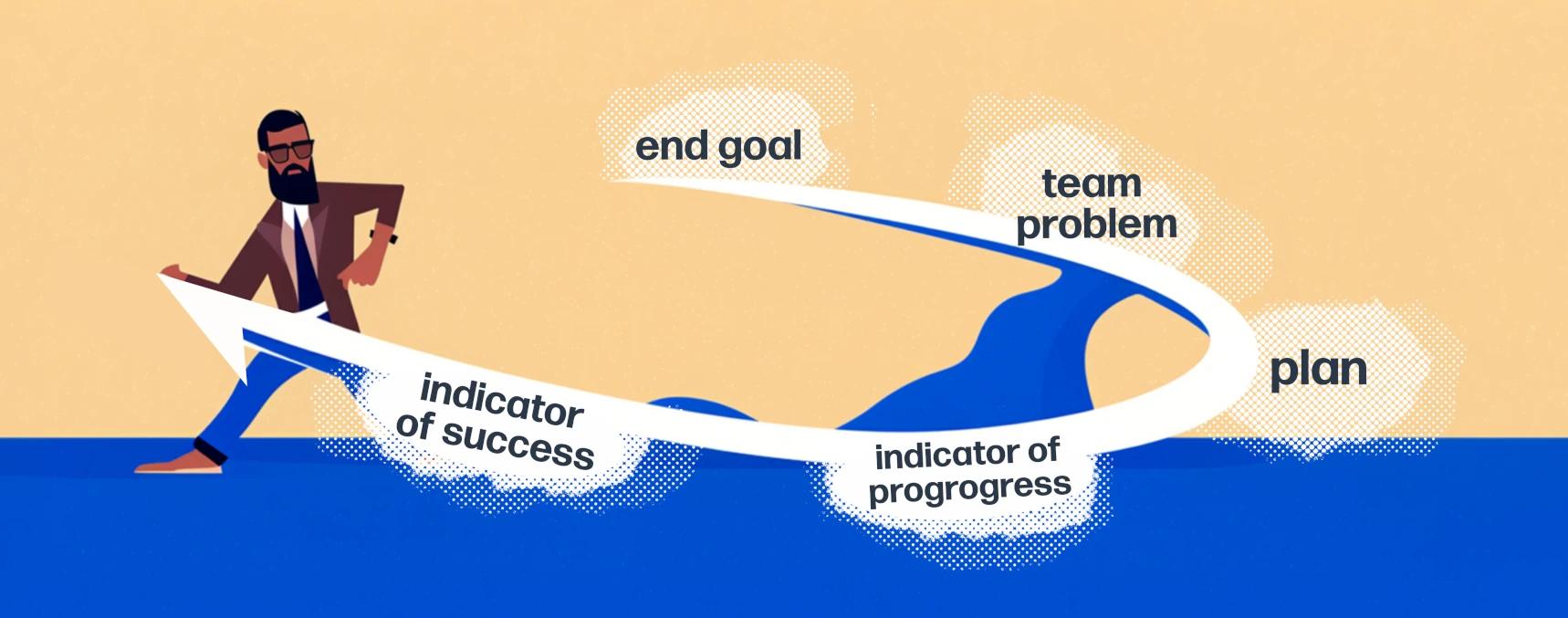

Ideally, the process should be straightforward: Identify a metric that mirrors the sought-after improvement. Get the team on board and rally them to bolster it. Observe the progress.
But it's seldom this simple. While some teams might be well-versed in metrics or have unwavering trust in their managers, the reality is that productivity metrics like lead time or story points often stir feelings of unease. McKinsey's article, "Yes, you can measure software developer productivity", was a prime industry example. It stirred the pot, with numerous experts challenging its views including myself. Why the resistance? Often, it's rooted in past experiences or historical reasons. For instance, I recall a time when I was pushed to measure my team's effort using story points, to later on compare teams against each other. With experiences like these, it's no surprise that many are sceptical the next time metrics come up.
This is where the Boomerang Maneuver comes into play. It's a strategy to circumvent the usual resistance. Let's see a breakdown of the steps:

In essence, this is storytelling where the team plays the starring role. They're set up to conquer the challenge, using metrics as their toolkit.
For clarity, consider this scenario: Imagine the main concern is the lag from conceptualizing a feature to release. Although lead time from LEAN principles would be an apt measure, pushing it might meet resistance. Instead, ask the team about their most significant roadblocks in reducing the time-to-market for features. They might cite juggling numerous epics, which divides their focus. To track this, monitor the number of epics in progress. Over time, as the team addresses this issue, the feature's lead time will likely decrease.
This isn't a hypothetical scenario. Once, teams were asked to cut down feature lead time by 20%, which was received with skepticism. Some felt pressured, while others recalled past negative experiences with such metrics. But by turning the lens on their challenges, a startling discovery emerged: teams were spread thin across multiple epics. Shifting the narrative to make the team the protagonist and spotlighting the primary objective garnered the necessary motivation.
However, it's important to understand what the Boomerang Maneuver is and isn't. It's not a detached strategy. It necessitates meaningful dialogues, mutual understanding, and building a consensus with teams. Leaders seeking an immediate metric system to enhance efficiency might be looking in the wrong place. Metrics should provide insights, not bypass intricate team dynamics.
The Boomerang Maneuver pivots from thrusting metrics onto teams to working together to recognize issues and create solutions. This collaborative spirit is the key to counteracting the usual resistance to a data-driven approach. So, the next time you fear of facing such resistance, remember that you can follow the steps below:

I'm a fractional CTO that enjoys working with AI-related technologies. I have dedicated more than 15 years to serving SaaS companies. I worked with small startups and international scale-ups in Europe, UK and USA, including renowned companies like Typeform.
I now work helping startups achieving high growth and performance through best practices and Generative AI.